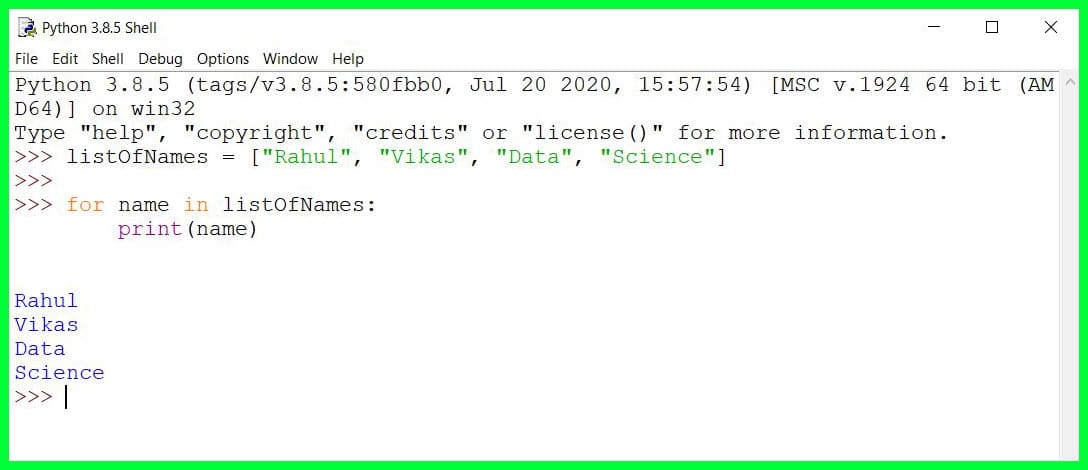- Python Script Runner Online
- Online Python Script Runner
- Starting A Python Script
- Python Script Runner Download
Python is a practical, feature-rich language with extensive library support that enables you to create custom scripts. Table 1 outlines the Python versions available on devices running Junos OS and devices running Junos OS Evolved and notes the release in which support for that version was added or removed for certain types of scripts. Jun 07, 2021 Running Python scripts in IDE is a straightforward thing. You will find a button to run the Python script with the same name. Click it to run the Python script. The most common way to run the Python scripts is to use the command line or terminal. Let’s see the steps to run the Python scripts using the command line or terminal. Running Python Code Interactively 02:38. Running Python Code From the Command-Line 04:37. Running Python Code From a File Manager 05:47. Running Python Code From an IDE or Text Editor 02:01. Running Python Scripts: Recap & Summary 01:08. Once you specify your Python installation, you’re ready to begin running Python scripts in Power BI Desktop. Run Python scripts. In just a few steps, you can run Python scripts and create a data model. From this model, you can create reports and share them on the Power BI service. Prepare a Python script. Running the.py script from the Terminal. Running the Python script from the terminal is very simple, instead of writing the Python script in the terminal all you need to do is use a text editor like vim, emacs or notepad and save it with a.py extension.
If you can't execute or run a Python script, then programming is pointless. When you run a Python script, the interpreter converts a Python program into something that that the computer can understand. Executing a Python program can be done in two ways: calling the Python interpreter with a shebang line, and using the interactive Python shell.
Run a Python Script as a File
Generally programmers write stand alone scripts, that are independent to live environments. Then they save it with a '.py' extension, which indicates to the operating system and programmer that the file is actually a Python program. After the interpreter is invoked, it reads and interprets the file. The way Python scripts are run on Windows versus Unix based operating systems is very different. We'll show you the difference, and how to run a Python script on Windows and Unix platforms.
Run a Python script under Windows with the Command Prompt
Windows users must pass the path of the program as an argument to the Python interpreter. Such as follows:
C:Python27python.exeC:UsersUsernameDesktopmy_python_script.py |
Python Script Runner Online
Note that you must use the full path of the Python interpreter. If you want to simply type python.exe C:UsersUsernameDesktopmy_python_script.py you must add python.exe to your PATH environmental variable. To do this, checkout the adding Python to the PATH environment article..
Window's python.exe vs pythonw.exe
Note that Windows comes with two Python executables - python.exe and pythonw.exe. If you want a terminal to pop-up when you run your script, use python.exe However if you don't want any terminal pop-up, use pythonw.exe. pythonw.exe is typically used for GUI programs, where you only want to display your program, not the terminal.

Run a Python Script Under Mac, Linux, BSD, Unix, etc

On platforms like Mac, BSD or Linux (Unix) you can put a 'shebang' line as first line of the program which indicates the location of the Python interpreter on the hard drive. It's in the following format:
A common shebang line used for the Python interpreter is as follows:
You must then make the script executable, using the following command:
Unlike Windows, the Python interpreter is typically already in the $PATH environmental variable, so adding it is un-necessary.
You can then run a program by invoking the Python interpreter manually as follows:
Python Execution with the Shell (Live Interpreter)

Online Python Script Runner


Starting A Python Script
Assuming that you already have Python installed and running well (if you're getting an error, see this post), open the terminal or console and type 'python' and hit the 'Enter' key. You will then be directed immediately to the Python live interpreter. Your screen will display a message something like:
2 4 | Python3.3.0(default,Nov232012,10:26:01) [GCC4.2.1Compatible Apple Clang4.1((tags/Apple/clang-421.11.66))]on darwin Type'help','copyright','credits'or'license'formore information. |
Python Script Runner Download
The Python programmer should keep in mind one thing: that while working with the live interpreter, everything is read and interpreted in real-time. For example loops iterate immediately, unless they are part of function. So it requires some mental planning. Using the Python shell is typically used to execute code interactively. If you want to run a Python script from the interpreter, you must either import it or call the Python executable.